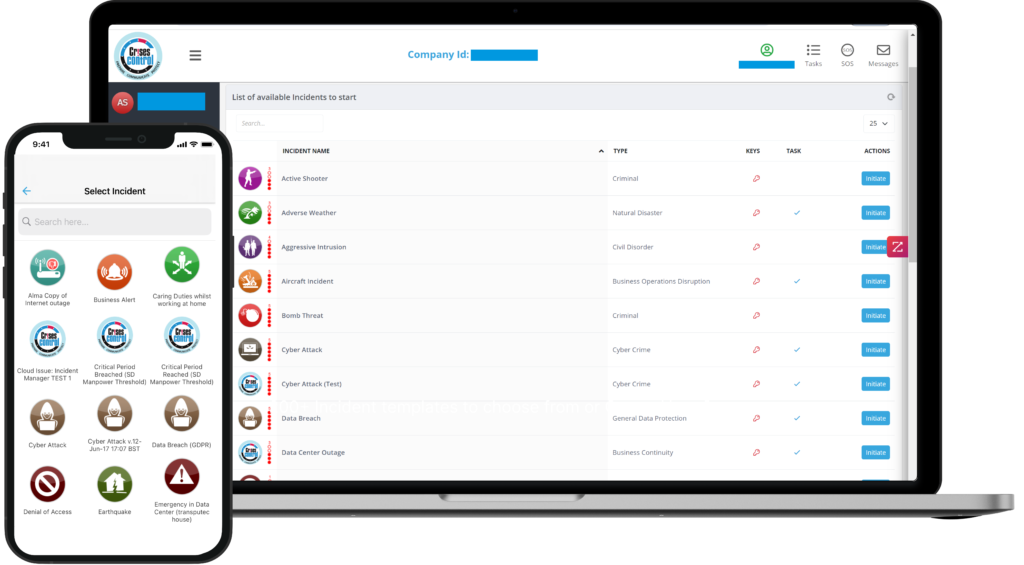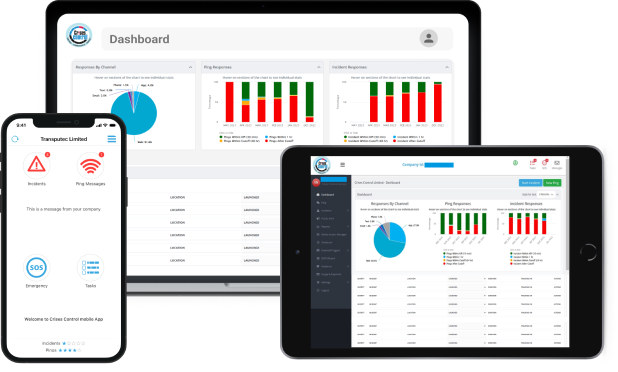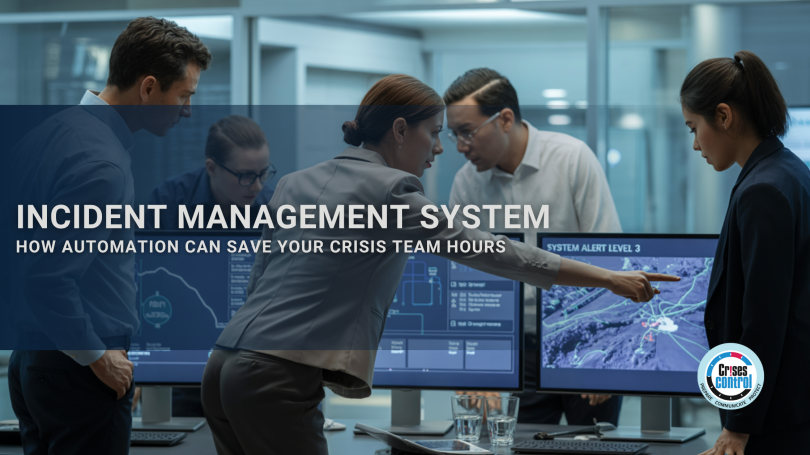Written by Anneri Fourie | Crises Control Executive
An Incident Management System is no longer just a tool for tracking problems. It is the cornerstone of an organisation’s ability to respond quickly and effectively when unexpected events occur. Yet many businesses still rely on slow, manual processes to handle incidents, costing them time, resources and often leaving teams overwhelmed when seconds count. When a crisis hits, delays in communication or unclear responsibilities can cause confusion, wasted effort and increased damage.
The solution is clear. Automating incident management transforms how your crisis team works, enabling faster, more accurate responses and removing human error from the equation. This blog explains how an automated Incident Management System functions, the practical benefits it brings, and how Crises Control can help your organisation save hours in every crisis situation.
What Is an Incident Management System and Why Is It Essential?
At its core, an Incident Management System is a platform that helps organisations log, track and resolve incidents that threaten operations or safety. These incidents might be IT outages, security breaches, health and safety emergencies or environmental hazards.
Without a proper system, incident response tends to rely on phone calls, emails and manual checklists. This slows communication and risks critical messages being missed or misunderstood. An Incident Management System provides a central hub that automatically alerts the right people, documents every step, and guides teams through established response procedures.
The challenge many organisations face is that manual workflows are simply too slow and prone to human error to meet the demands of today’s complex threats. This is where automation within an Incident Management System makes the difference.
How Does an Automated Incident Management System Work?
An automated Incident Management System uses technology to detect issues instantly and trigger the appropriate response without waiting for manual intervention. The system connects with existing monitoring tools, sensors or external alerts to identify incidents in real time.
Here is what happens when an incident occurs:
- The system receives an alert from your monitoring software or sensors.
- Automated rules determine the nature and severity of the incident.
- Notifications are sent immediately to the right individuals or teams via multiple channels such as SMS, email, voice calls or app alerts.
- Predefined response workflows are launched to guide each responder’s actions step by step.
- The system tracks progress and provides live updates to keep everyone informed.
- All actions are recorded for compliance and future review.
This approach removes bottlenecks, eliminates confusion about who should respond, and significantly shortens the time from incident detection to resolution.
Why Automate Incident Management? The Benefits for Your Crisis Team
Automating incident management delivers several practical advantages that improve how your crisis team operates:
- Faster response times: Automated alerts mean responders are notified instantly. This can reduce response times from hours to minutes, limiting damage and downtime.
- Reduce human error: Manual processes risk messages being delayed, sent to the wrong person or forgotten. Automation ensures every alert is sent correctly and acknowledged.
- Clear roles and workflows: Automation enforces consistent procedures and clarifies responsibilities. Everyone knows their role and next step without needing to check or guess.
- Better coordination: With real-time updates and a central platform, teams work together seamlessly even if they are remote or spread across locations.
- Stronger compliance: Automated logs and audit trails help demonstrate that incident responses meet regulatory requirements and internal policies.
- Save time and resources: Crisis teams spend less time chasing people and more time focusing on resolving the issue.

Interested in our Incident Management System?
Customise your Crisis Incident Management Software to meet your specific needs with our flexible tools & stay connected and informed during the crisis and incident management process
Five Steps to Automate Incident Management for Faster Crisis Response
If your organisation wants to introduce automation into your incident management, here are five practical steps to guide the process:
- Integrate your monitoring tools: Connect your Incident Management System to IT monitoring, security alarms, environmental sensors or any data source that signals an incident. This enables automatic detection without relying on manual reporting.
- Set up notification rules: Define exactly who should be alerted for each incident type and severity level. Use multiple communication channels to make sure messages get through quickly.
- Design response workflows: Develop clear step-by-step procedures tailored to different incidents. Automate these workflows so they start as soon as an alert is triggered.
- Enable real-time collaboration: Use dashboards and mobile apps to keep all responders informed of progress and allow easy sharing of updates or new instructions.
- Review and improve: After each incident, analyse the logged data to identify bottlenecks or errors. Refine your rules and workflows continuously to improve response times and effectiveness.
Why Choose Crises Control for Your Automated Incident Management?
Not all incident management platforms deliver the same results. Crises Control is designed specifically to help organisations automate their crisis response with simplicity and reliability.
- Seamless integration: Crises Control connects easily with your existing monitoring and IT infrastructure, whether that’s security systems, operational sensors or communication tools.
- Customisable workflows: You build incident response plans tailored to your unique risks and teams. Automation handles complex workflows, so you don’t have to.
- Multi-channel alerts: Reach your teams instantly through text, phone calls, email and apps, ensuring no alert goes unnoticed.
- Real-time collaboration: Our platform keeps everyone on the same page with live updates, status tracking and messaging.
- Compliance and audit trails: Every action is automatically logged, helping you meet regulatory requirements and improve your response over time.
- Scalable and reliable: Whether your team is small or global, Crises Control supports your needs with robust cloud infrastructure and 24/7 support.
With Crises Control, you gain a partner that understands the pressure crisis teams face and provides a system that truly saves time and reduces risk.
Conclusion: Take Control of Your Incident Response Today
When incidents happen, every second counts. Relying on manual processes puts your organisation at risk of slow responses, confusion and costly errors. An automated Incident Management System turns chaos into calm by delivering instant alerts, clear workflows and real-time collaboration.
By automating your incident management, you empower your crisis team to respond faster, reduce mistakes and save valuable hours during critical moments.
Crises Control is here to help you make that transformation. Our platform provides a proven, flexible solution trusted by enterprises around the world. To see how automation can work for your organisation, get in touch with us today for a free demo.
Take the first step to faster, smarter crisis management and give your team the tools they need to protect your business.
Request a FREE Demo

